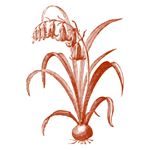by Rachel Coleman
In school I was never much of a science girl, always preferring the world of the humanities. In high school, courses like biology, chemistry, and physics were necessary evils on the way to graduation; in college, they were sigh-inducing requirements to be gotten out of the way as soon as possible, so I could get on to the really important matters of language and literature. Labs, formulas, and periodic tables held no fascination for me; my wonder and attention were caught by metaphor, color, drama, and the miracle of language that could evoke the breadth and depth of the human condition and offer glimpses, no matter how fleeting or liminal, of the transcendent realities of eternity.
I wonder, however, how my experience of the sciences might have been different if my teachers had been attentive to the powerful poetry and drama, the astonishing order and beauty, the incredible glimpses of transcendent truth that are visible in science itself. Take autumn leaves, for instance. After years in the tropics, where lush green is the year-round dominant color, I have a special appreciation for the brilliant color displays every autumn in the northern hemisphere.
But despite the poetry-inducing, glorious beauty of the season, I’ve never really thought about the science behind it until this year. It was fascinating to discover that the yellow and orange pigments that blaze out in October are already present in the leaves during the months when green reigns supreme, transitioning from the gentle, hopeful tint of spring to the robust jade of a well-watered early summer. Green is the color of chlorophyll, the extraordinary chemical that transforms the energy of sunlight into the food that nourishes the tree. The green pigment of chlorophyll coexists in the leaves all year round with other pigments that produce yellow and orange coloring, but for most of the year the overwhelming presence of super-productive green masks the other hues. In the fall, however, when days get shorter and cooler, the food-production process stops, chlorophyll breaks down, and the other colors—which had always been there—become visible.
And what a show they put on! As the yellows and light oranges are taking center stage, other chemical changes are occurring simultaneously, allowing deep oranges and reds to join the party in some trees.
The glorious color party is all too short-lived, as “leaf tourists” can attest. During the brief blaze of brilliance, other changes are also occurring. “At the point where the stem of the leaf is attached to the tree, a special layer of cells develops and gradually severs the
tissues that support the leaf. At the same time, the tree seals the cut, so that when the leaf is finally blown off by the wind or falls from its own weight, it leaves behind a leaf scar.” Soon the tree’s branches, no longer cloaked in their leafy ornaments, stand starkly bare against the pale wintry sky.
As I soaked in the autumn beauty this year with a mind and spirit attentive for the first time to both the biology and the poetry of the season, it struck me that there is a powerful little sermon for mid-life and beyond, built right into the visible and invisible processes that produce the changes that so rivet our marveling gaze. Just as the diminishing supply of chlorophyll and the end of photosynthesis results in other, already-present pigments having a season to shine, so the fading of the energies and beauties of youth reveals what is already present in us. The question is, are the right “pigments” and processes being put in place during my younger and mid-life years, so that when “autumn” comes, there will be latent beauty of another sort, just waiting its season to shine? That season will likely be relatively short, compared to youthful “green time,” but it holds the potential for radiant and glorious beauty!
And as autumn is passing away into winter’s long, gray slowness, I’ve been particularly attentive to the trees on my morning walks, deeply impressed with their unexpected and unusual beauty. From a distance, the “leaf scars” aren’t visible, but I know they’re there.
What is visible is the starkly black outline of twisted, knotted limbs against the pink sunrise or silver cloud bank. Absolute poetry! Some trees show whimsical whirls, almost as if their branches are filled with secret laughter; others, a delicate, lacy pattern that seems to hint at quiet, unexpected strength. All of them reach toward the sky, lifting their exposed lives back into the hands of the Creator, unashamedly standing with their true selves and the marks of their age revealed. And all of them, in this wintry season, denuded of leafy coverings, let so much more light shine through! I pray that may that be true of my aging—that as the trappings of youth inevitably fall away, as wrinkles and swollen joints and changing pigments become the visible marks of life’s journey, may more light shine through to bless others. And may we all—whether still in the green season or moving into autumn—be gladly attentive to the beauty of
those who are already in winter’s season, ready to learn from their scars and to rejoice
in the light that shines through their unadorned branches.
Cover photo by Natalia Rüdisüli on Unsplash






Rachel, thank you for this evocative piece.
My husband is from New Zealand where the native trees are evergreen, and he just loves the silhouette of our British Winter trees. Like you, I too like to mark the year by the changes to the colours of the leaves, and I loved how you drew this to a metaphor of middle age and beyond.
Thanks, Rachel!